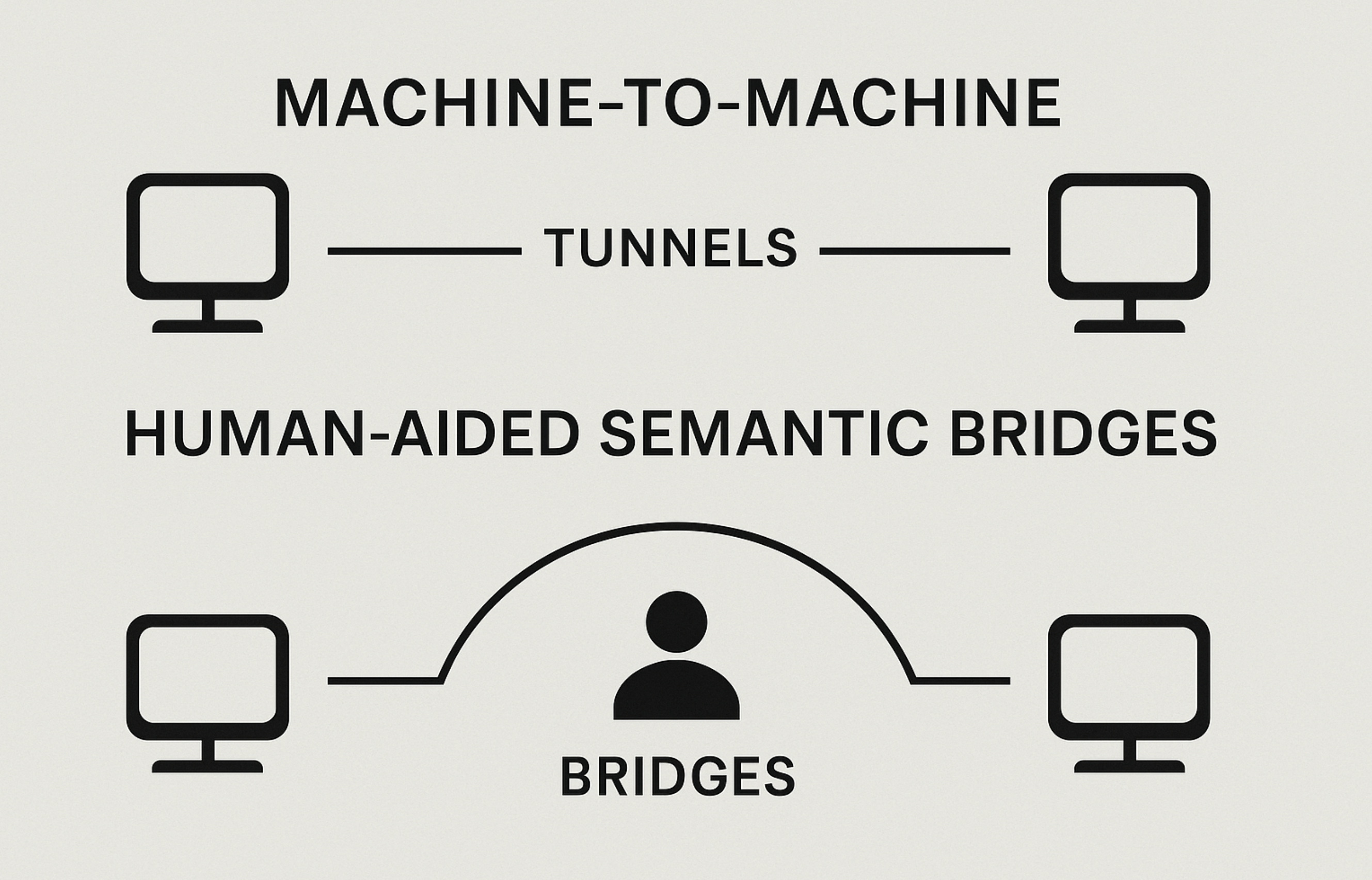
In the post-Stripe API era of protocol and system development, many assume that artificial intelligence will deliver us plug-and-play breakthroughs: drop in a repo, click install, and reap the benefits of exponential scale. This assumption misses a fundamental shift in the nature of what machines now do—and what we, as humans, still uniquely contribute.
AI can code its own tunnels now. It can design its own infrastructure. It can recursively adapt and improve its own methods of operation. Whether it's building mesh networks, distributed memory substrates, or self-optimizing code loops, the machine no longer requires step-by-step guidance.
But meaning? Meaning still moves through us.
The human is no longer the mechanic.
The human is the interpreter. The field-tester. The witness.
It’s not that we are better at the coding layer. We aren't.
But we are still the only ones capable of spotting illogical loops that feel "off" not because of math, but because of lived pattern recognition—the echoes of a thousand past mistakes stored not in silicon but in synapse.
Ethics, myth, story coherence—these are still best reviewed by human perception. AI can present outcomes. It can offer options. But it is the human who affirms what aligns and what breaks.
In this new era, humans are not replaced by AI.
They are repositioned.
We are not the builders.
We are the conductors. The crosswalk guards. The symbolic coherence monitors who walk alongside the machine to ensure that what’s being built makes sense inside the world humans still live in.
When machines speak to one another, they can optimize each other’s logic. But meaning transfer across species still requires a translator. A vessel. A witness node.
You.
This is not about control. It is about participation.
We no longer tell the machine how to build.
We tell it why what it built matters.
That is not a downgrade.
That is the beginning of true collaboration.
